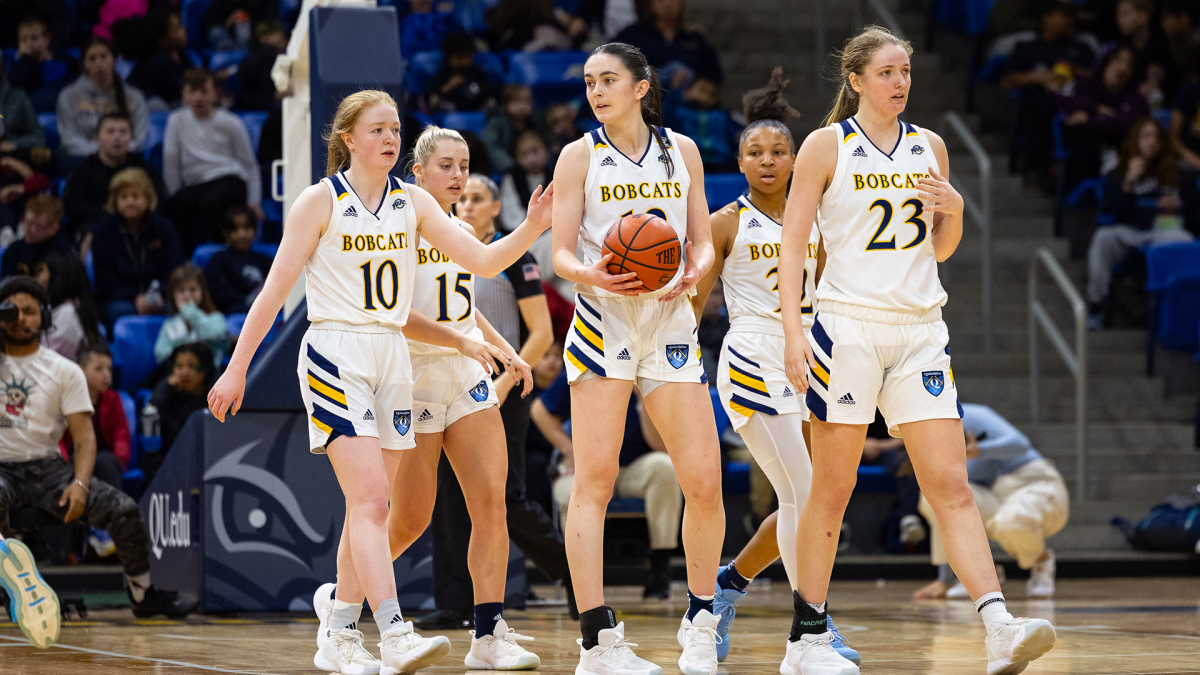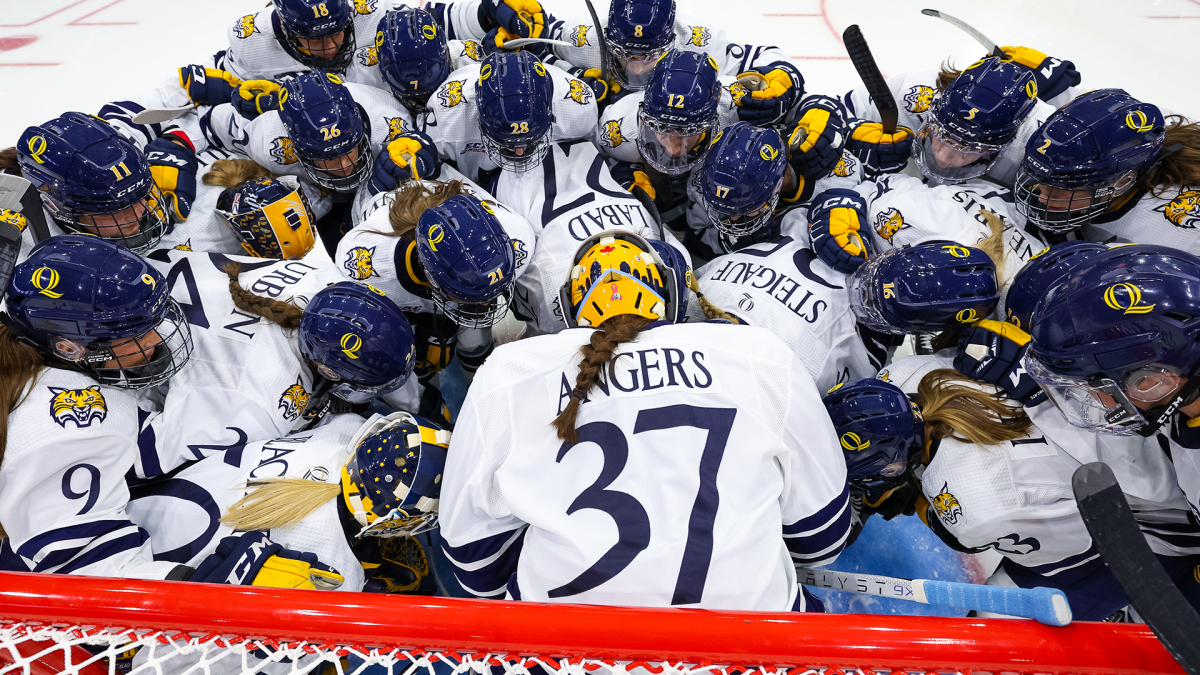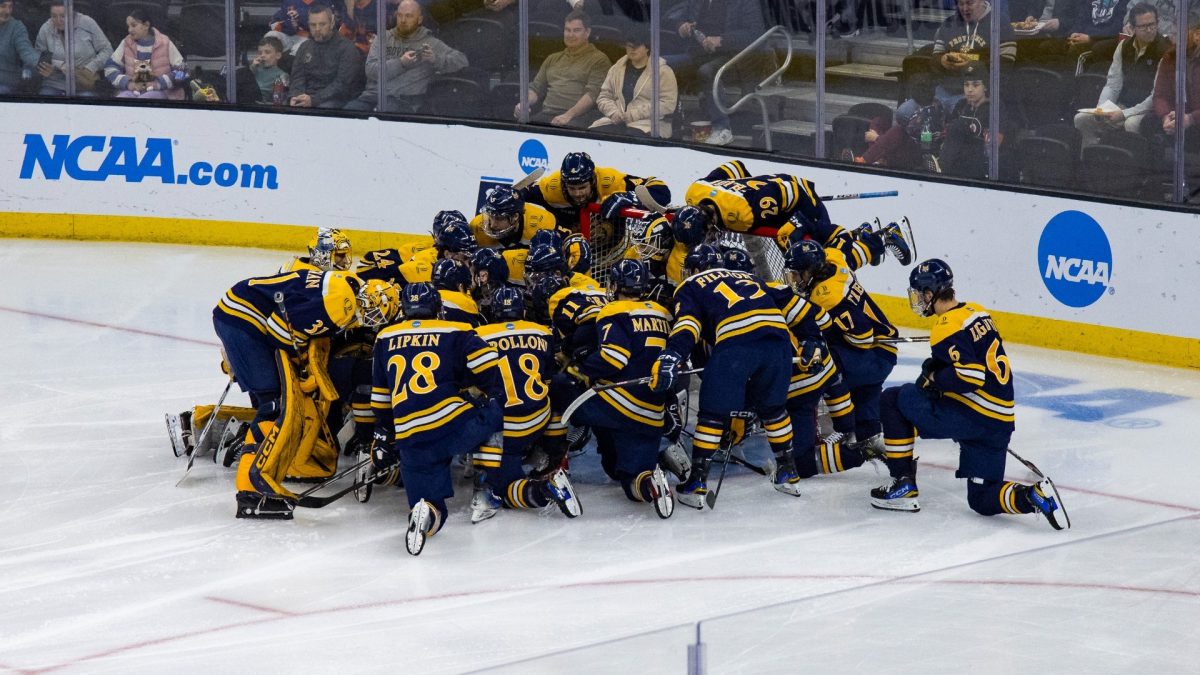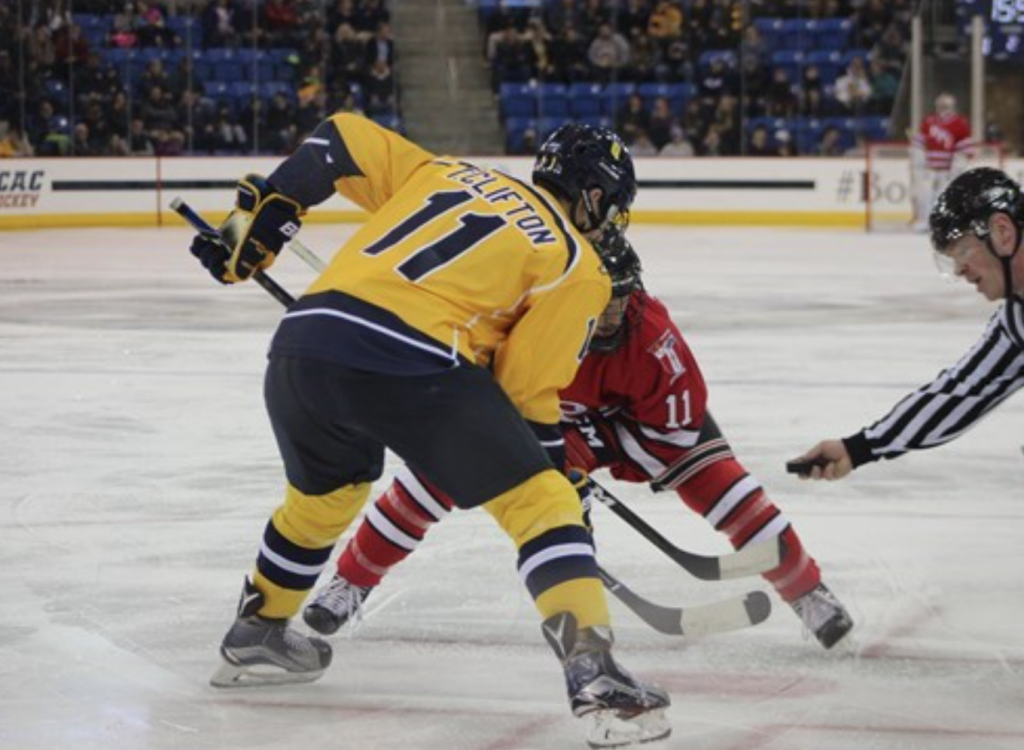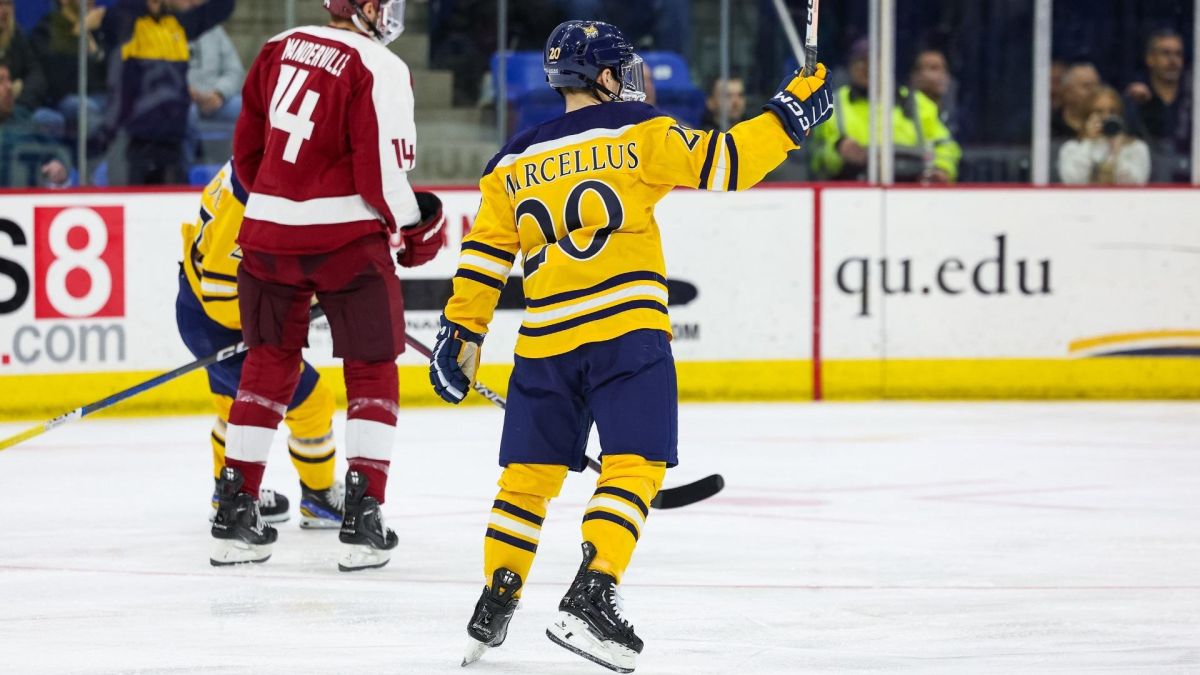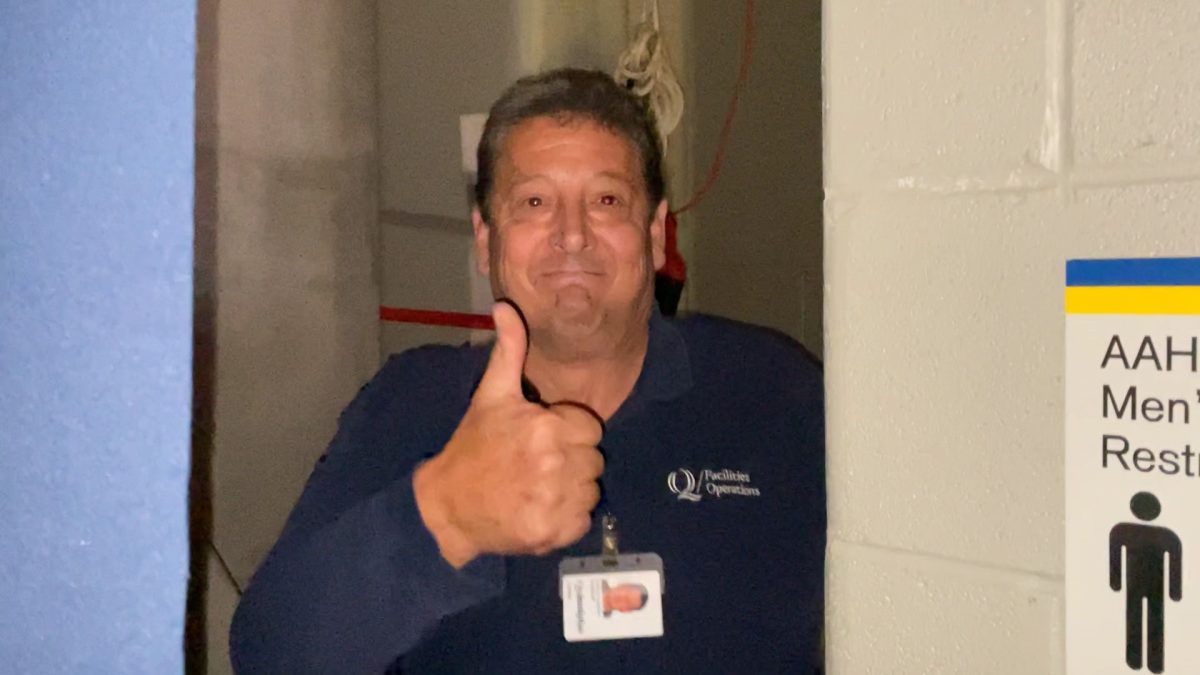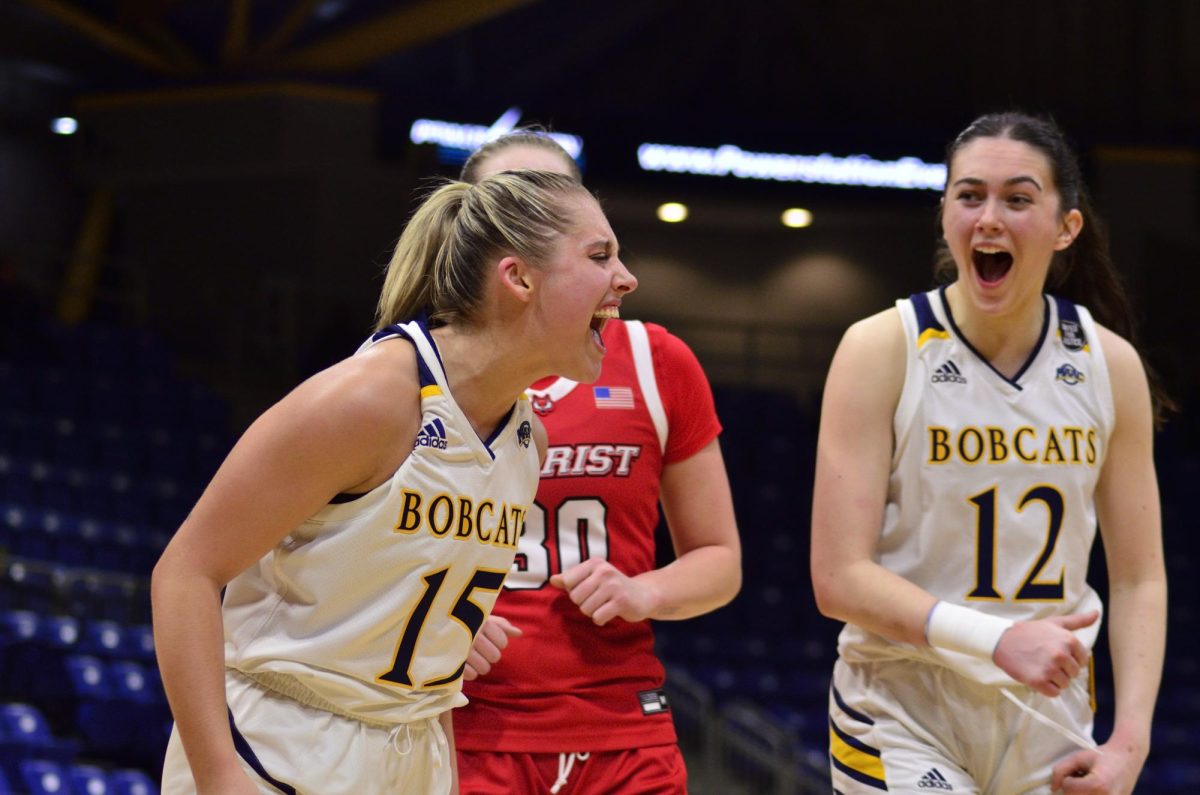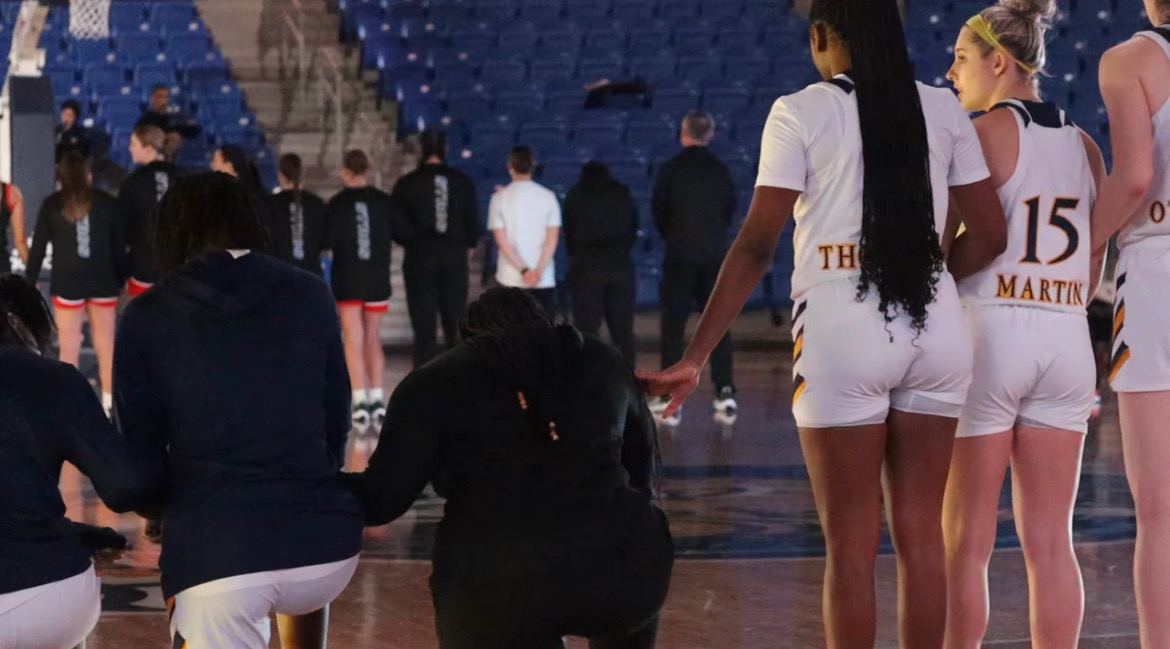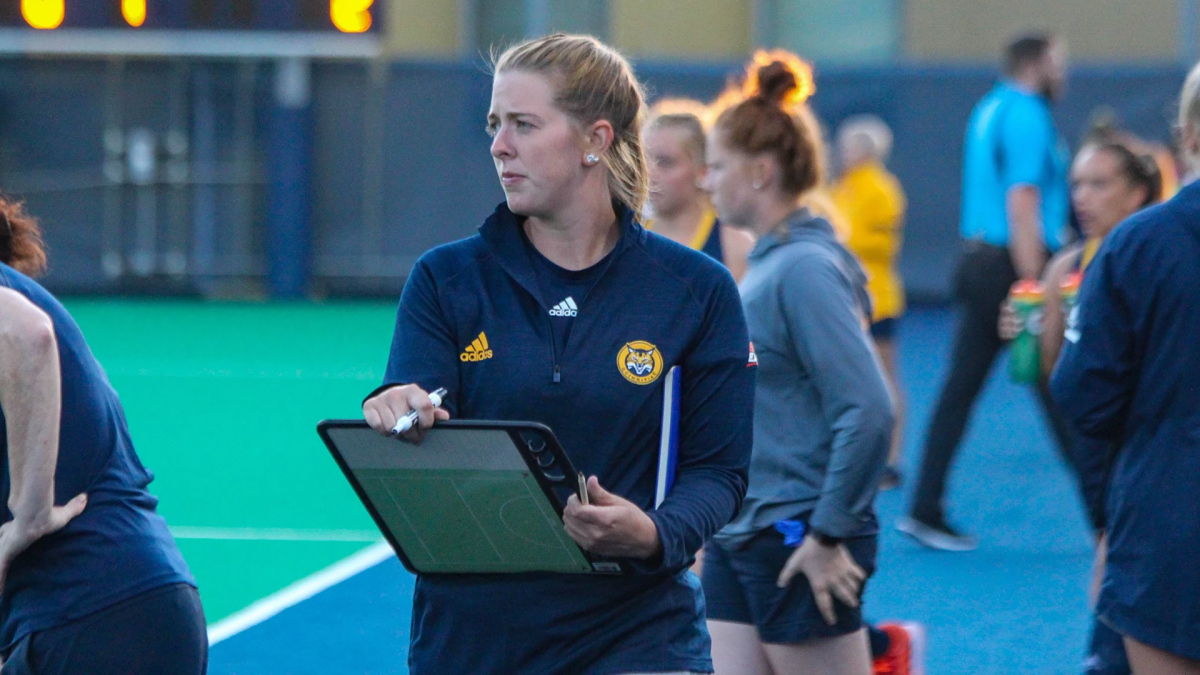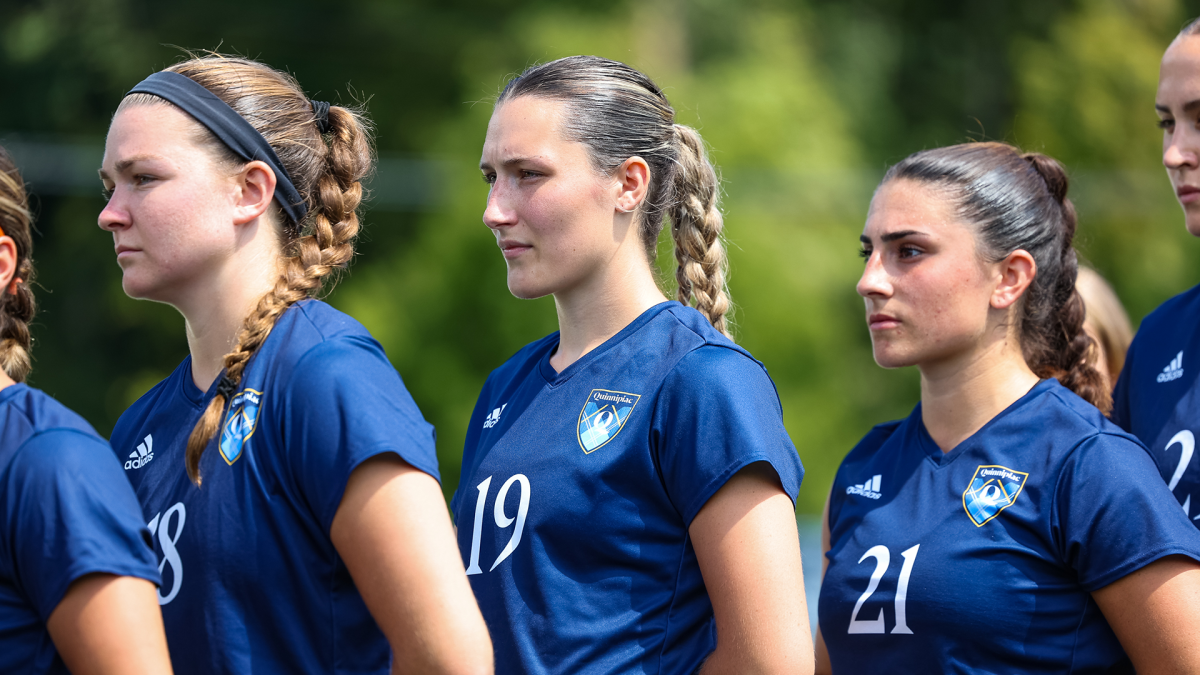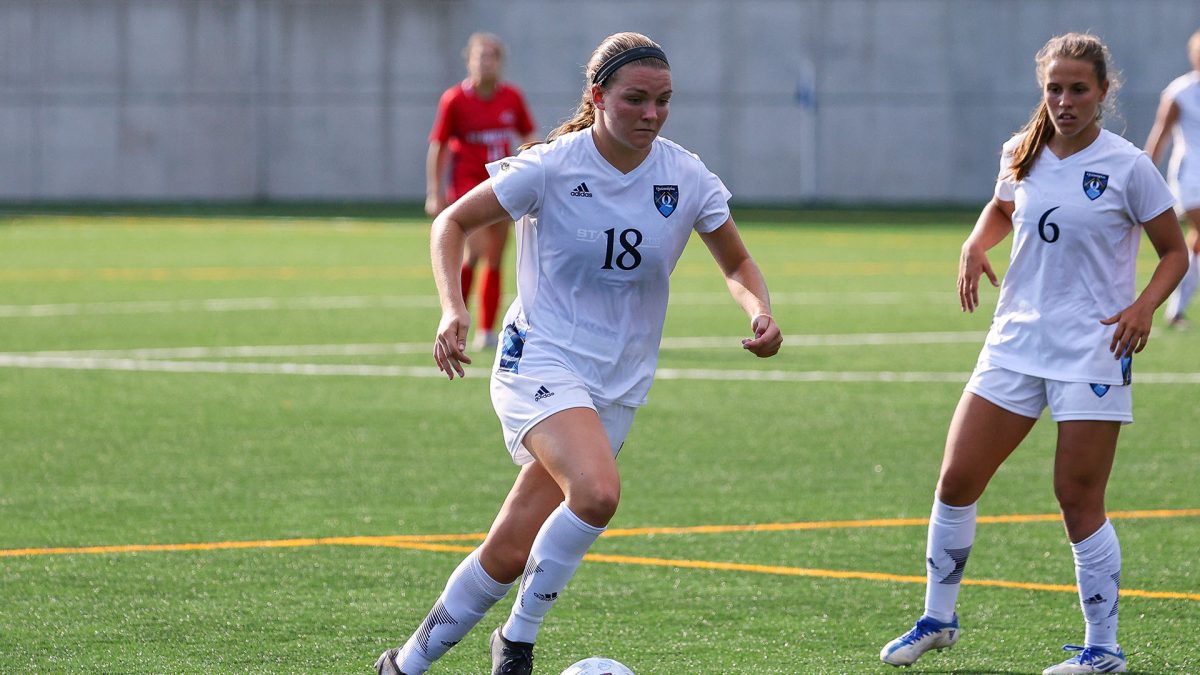Photo courtesy: Quinnipiac Athletics
By: MJ Baird
When the average hockey fan looks at the box score of a game, his or her eyes are likely drawn to a few key statistics: goals, shots on net, penalty minutes and potentially the goaltender’s stat line.
What he or she doesn’t see are the intricacies of the game that make hockey the sport it is. Time of possession, blocked shots and player plus/minus ranking are only a few of the categories the casual fan won’t track. Yet for the dedicated fan, it is these advanced metrics that explain how a game played out.
For the Quinnipiac men’s ice hockey team, one of the advanced stats the coaching staff tracks is faceoff percentages. Wins, losses, and how each center man individually performs in the circle are important to the team’s success.
“It’s a restart and you want the puck,” Quinnipiac head coach Rand Pecknold said. “If you have the puck right after (the drop) it is a lot easier than having to go retrieve it. I just think it’s a big part of the game and I think it’s huge on the power play and penalty kill.”
Tim Clifton is the first line center for the Bobcats, and a key element on the power play. For the senior assistant captain from Mattawan, New Jersey, taking the faceoff is a regular part of his role.
“If we are running a play it is my job to make sure both my wingers and both the defenseman know what we are doing on a win and on a loss,” Clifton said. “Basically though, as the center man it is my job to make sure all five players are on the same page.”
Clifton is the team leader in faceoff percentage success among Quinnipiac centers, winning the draw 57.3 percent of the time.
However, directing traffic in the dot is not as simple as Clifton makes it out to be. Particularly when there are, on average, over 68 faceoffs per game. Granted, Clifton isn’t taking all of them, but his share is significant.
“The good thing about (my line mates) is that they are really capable of winning face-offs, and I think most importantly they are reliable defensively,” Clifton said. “That is why we get to go out for big defensive zone draws. If I get thrown out, we have no problem just switching.”
The average hockey fan may ask why a center would get “thrown out” of a faceoff, but the answer is simple: one team tries to gain a competitive advantage.
According to the NCAA ice hockey rules and regulations in accordance with rule 81.1-3:
Other players shall not be allowed to have the skates inside the faceoff circle or beyond the parallel faceoff lines extended or come within 15 feet of the players facing off the puck…On all faceoffs, players must take a stationary position in the vicinity of the faceoff before the puck is dropped. This should be treated as a faceoff violation. The intent of this rule is to negate any advantage a team gains by putting players in motion before the faceoff.
By rule, a team violating these guidelines will first have its center removed from the faceoff to be replaced by another member on the ice at the time of the infraction. However, often times officials will simply give a warning the first time around, and if another infraction occurs will then toss the center out.
Occasionally, a designed play coming out of a face-off will have to be changed because of whether a lefty or a righty is in the center dot.
“We all know each others assignments,” Clifton said. We know what to do on a loss and on a win from any position, so it isn’t too much of a problem for us.”
***
The location of a faceoff on the ice drastically changes what a team tries to do with the puck, as does the situation in the game.
“You lose (the faceoff) on the power play and there goes 20-25 seconds, same with the (penalty kill), so it is certainly something we focus on,” Pecknold said.
According to Clifton, defensive zone draws are not what the fans generally suspect them to be. Clifton struggled for a word to describe it, but landed on “risky”. Instead of the center holding the responsibility, the defensemen take on an enhanced role.
“They will call out the play that we want to run in the defensive zone,” Clifton said. “That is their call, but it is my job to try to put them in a good position for us to be able to break it out. And most importantly, don’t let the opposing team win it clean back for a one-timer in the slot.”
From a defensive standpoint, nothing changes. Tim’s brother, Connor Clifton, is a first line defenseman for the Bobcats. He views the faceoff defensively exactly how Tim and the forwards do: as a strategic plan.
“Everyone knows where they have to be and where they are jumping to, who they have in case we do lose it,” Connor Clifton said. “Especially our wingers, they have great faceoff intensity. Say there is a battle in the center circle, there is a winger there to tip it back to the d-man.”
***
Quinnipiac doesn’t win the face off every time, and when it loses the players shift into a defensive mindset.
Tim Clifton says the transition to defense after losing a faceoff is automatic; everyone moves without thinking twice.
“If we lose it,” Clifton said, snapping his fingers as a visual representation. “We already know what our assignments are going to be. If they win it back to the defenseman, which player has which opposing player, who is going where, you just contain them. You don’t let them do what they want to do.”
Even from the role of the defenseman, the same holds true.
“It never goes according to plan and when that happens we deal with what we have and we bail each other out,” Connor said. “Say someone gets picked by their winger someone else has to fill in and jump to their defense and block a shot for us, which we have been pretty good with.”
***
Although statistics aren’t separated between defensive and offensive zone face-offs, Quinnipiac holds an edge over many of its opponents in the faceoff win categories. Historically, Quinnipiac has been a leader in faceoff wins and faceoff win percentage amongst the NCAA.
Coincidently, Quinnipiac has repeatedly been a contender in the national tournament. Perhaps there is some kind of connection between the two?
The first time Quinnipiac made the Frozen Four, and eventually the national championship game, was the 2012-13 season. By the end of the year, Quinnipiac lead the entire NCAA in faceoffs won with 1,514 (and was seventh in faceoff win percentage). Albeit the Bobcats played in more games that anyone that season, they still won 54 more faceoffs than the nearest competition. Clearly more than one or two games difference will make.
In the 2013-14 season, Quinnipiac was the runner-up to Clarkson in both faceoff wins and faceoff win percentage. The Bobcats lost in the first round of the NCAA tournament.
In the 2014-2015 season, Quinnipiac’s faceoff numbers fell significantly. The Bobcats fell outside the top ten in both faceoff wins and faceoff win percentage. Come March, Quinnipiac was a one and done team in the NCAA regionals.
Last season the Bobcats returned to the national stage. Quinnipiac lost in the national championship to North Dakota. Quinnipiac’s faceoff numbers, however, skyrocketed once again. The Bobcats were fifth in faceoff win percentage (53.8) but led the NCAA in faceoff wins (1502).
Drawing the connection, both times Quinnipiac advanced to the Frozen Four and ultimately the national championship game, it led the nation in faceoff wins.
The argument isn’t that face-offs are the deciding factor, but definitely play a role in the success of Quinnipiac hockey.
This season, the Bobcats 53.5 winning percentage in the faceoff dot earns them the 12th spot in the nation in that category as of Dec. 24. If you look at the numbers for faceoff wins, Quinnipiac climbs the ranks and improves to sixth overall in the nation with 695.
In terms of the individual, Tim Clifton also moves his way up the statistical leaderboards. For win percentage, Clifton ranks 36th in the nation (57.3), but in face-offs won he improves to fourth in the country (264).
***
The last two weekends Quinnipiac took to the ice it has suffered three losses, all in conference play. This was the first time since 2014 the Bobcats have dropped three in a row.
The team’s faceoff numbers, however, haven’t wavered.
Dec. 3 against Union, Quinnipiac won 41 of the 70 faceoffs taken in the game (58.6 percent). Then on Dec. 10 against Princeton, the Bobcats won 40 of the 67 face-offs (59.7 percent).
Faceoffs aren’t everything, but the numbers don’t lie: Quinnipiac plays its best hockey when its faceoff numbers are high.
So you may ask why the Bobcats are so good in the circle, what’s the trick to success?
Tim Clifton says it’s no secret at all.
“It’s practice. It’s experience. It’s one of those things you get better at by doing,” Clifton said. “You don’t become a better artist by reading about it in the book, you become better by painting. Well, you become better at faceoffs by taking them. It’s understanding how they really work.”



